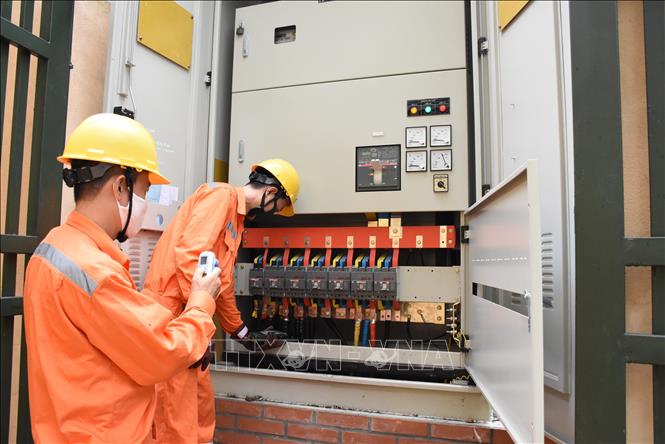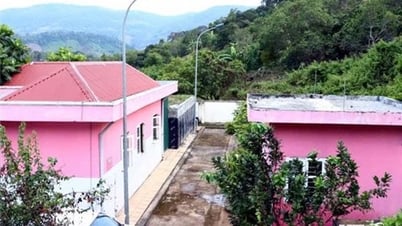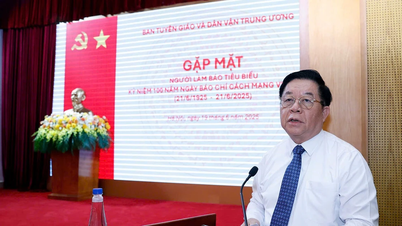Reduce to 5 levels
According to the document of the Ministry of Industry and Trade , the new electricity price list is expected to include 5 levels instead of 6 levels as at present, with the lowest level from 0-100 kWh, the highest from 701 kWh and above. In which, the electricity price of level 5 (for kWh from 701 and above) is proposed to be 3,612.22 VND/kWh.
Specifically:
+ Level 1: for the first 100 kWh; electricity price is 1,806.11 VND/kWh;
+ Level 2: for kWh from 101 - 200; electricity price is 2,167.33 VND/kWh
+ Level 3: for kWh from 201 - 400; electricity price is 2,729.23 VND/kWh
+ Level 4: for kWh from 401 - 700; electricity price is 3,250.99 VND/kWh
+ Level 5: for kWh from 701 and up; electricity price is 3,612.22 VND/kWh
Based on the design of the levels, the electricity price for each level is redesigned to follow the above principles as well as ensure minimal impact on electricity users.
Specifically: Maintain the current electricity price for the first level from 0-100 kWh to ensure stable electricity prices for poor households and social policy households with low electricity usage (accounting for 33.48% of households). The difference in reduced electricity revenue is compensated by households using electricity from 401-700 kWh and over 700kWh. Maintain the current electricity price for levels from 101-200 kWh and 201-300 kWh.
EVNHANOI workers check power supply connections in Hanoi . Photo: VNA
"Electricity prices for levels from 401-700 kWh and from 701 kWh and above are designed to offset revenue for lower levels," the Ministry of Industry and Trade stated.
According to the Ministry of Industry and Trade, the advantage of this plan is that it is simple and easy for people to understand because it reduces the current electricity price structure from 6 levels to 5 levels.
In addition, combining the levels together to increase the gap in electricity consumption between levels and widen the gap in consumption of higher levels, in order to reflect the actual situation of electricity consumption and encourage more economical and efficient use of electricity. At the same time, it partly limits the increase in electricity bills during the changing months.
The Ministry of Industry and Trade believes that the price increase between the levels is reasonable, the difference between the first and last levels is twice, in line with the general trend of countries around the world to encourage the use of electricity economically and effectively through increasing the price difference between the first and last levels.
For example, the difference between the first and last level in Southern California, USA is 2.2 times, South Korea is 3 times, Laos is 2.88 times; Thailand is 1.65 times.
Households with electricity usage of 710 kWh or less (accounting for about 98% of households) will have their electricity bills reduced.
The disadvantage of this option is that households with high electricity usage of 711 kWh/month or more (accounting for about 2% of households) have to pay more for electricity.
How is the charging electricity for the car calculated?
According to the report and calculation of Vietnam Electricity Group and consultants in the Project to improve the structure of retail electricity prices, the current electricity selling price for production does not accurately and fully reflect the cost of electricity production and business (lower than the allocated cost).
The Ministry of Industry and Trade believes that it is possible to immediately apply the electricity price plan for tourist accommodation establishments equal to the electricity price for production to ensure a step-by-step roadmap to correctly and fully calculate costs for production customers.
Accordingly, the revenue shortfall due to the addition of the "tourist accommodation" customer group can be considered to be compensated from the off-peak electricity price of the production customer group from 4% to 8% compared to the average retail electricity price because currently the off-peak price of this customer group is much lower than the average retail electricity price (from 52% to 56%).
However, the disadvantage of this option is that manufacturing enterprises will be affected by price increases from 1.27% to 3.85%, causing adverse impacts on manufacturing industries.
In addition, regarding the electricity price for electric vehicle charging activities, the Ministry of Industry and Trade has studied to add the customer group of electric vehicle charging stations and poles. The retail electricity price structure for electric vehicle charging stations and poles is built on the basis of electricity prices reflecting the production costs that charging stations/poles cause to the power system (option 1).
However, the Ministry also received many different opinions on this issue, specifically: Vietnam Electricity Group and Vietnam Consumer Protection Association proposed to apply the electricity price for electric vehicle charging activities according to the business price (option 2); Ministry of Transport and Vinfast Trading and Service Company Limited proposed to apply the electricity price for electric vehicle charging activities according to the production price (option 3).
“The Ministry of Industry and Trade believes that because option 3 applies retail electricity prices for production for the purpose of charging electric vehicles, it will generate cross-subsidy from other customer groups, so it is not consistent with the policy stipulated in Resolution No. 55-NQ/TW dated February 11, 2020 of the Politburo on the orientation of Vietnam's National Energy Development Strategy to 2030, with a vision to 2045, according to which cross-subsidy is not implemented between customer groups, so the Ministry of Industry and Trade recommends not considering this option but only considering options 1 and 2 to report to the Prime Minister for consideration, decision, and selection of the applicable option.
According to VNA/Tin Tuc Newspaper
Source



































































































Comment (0)